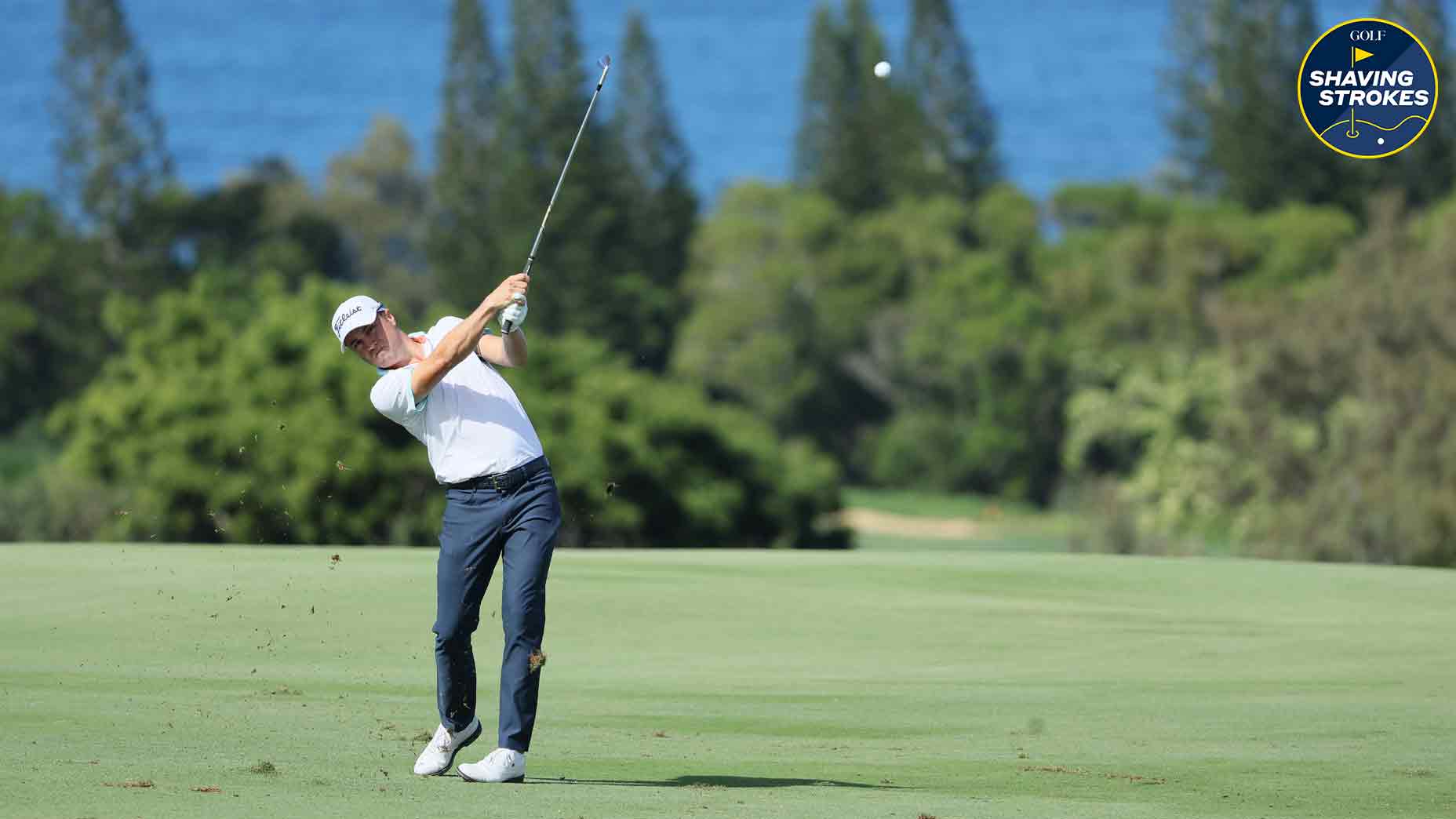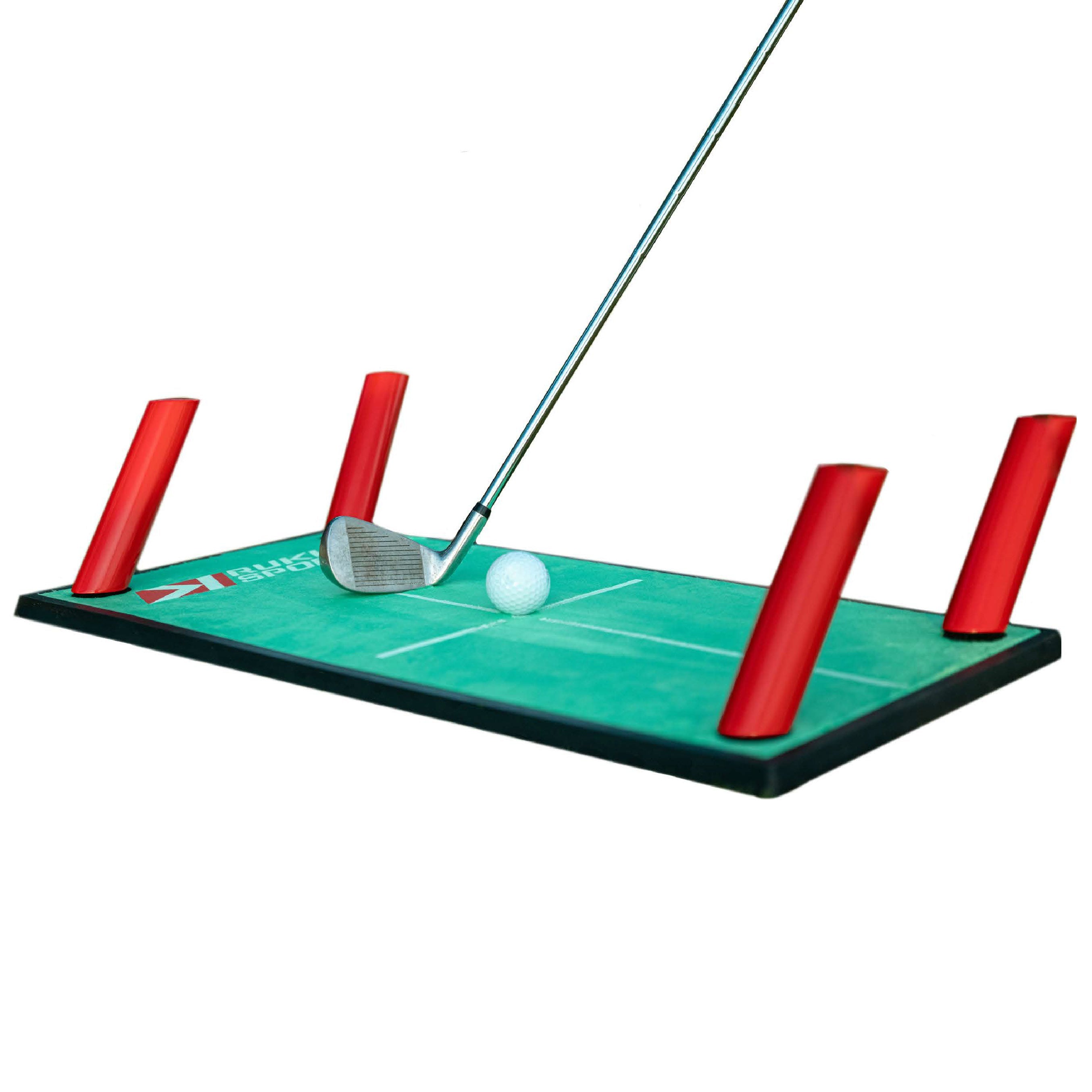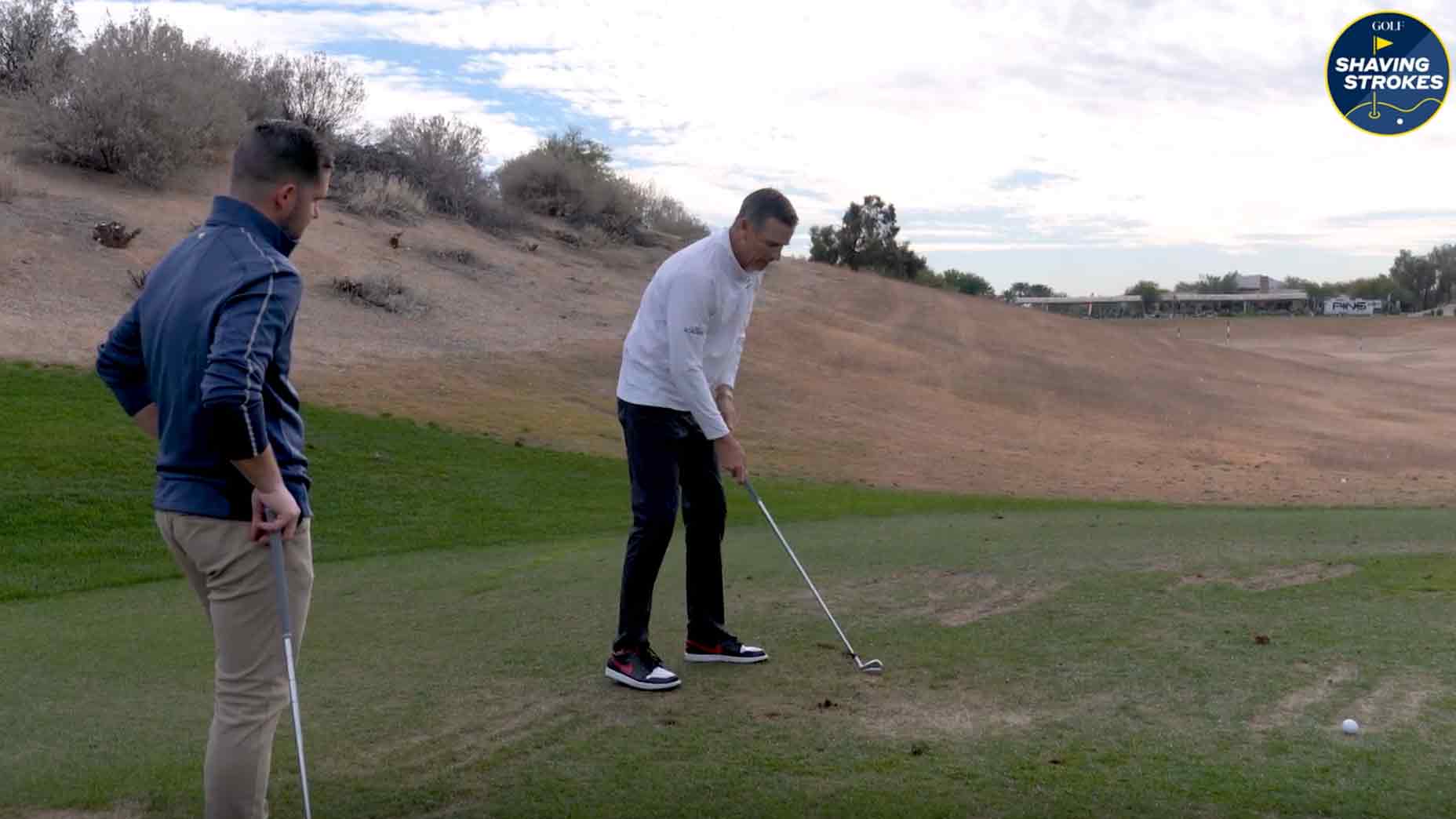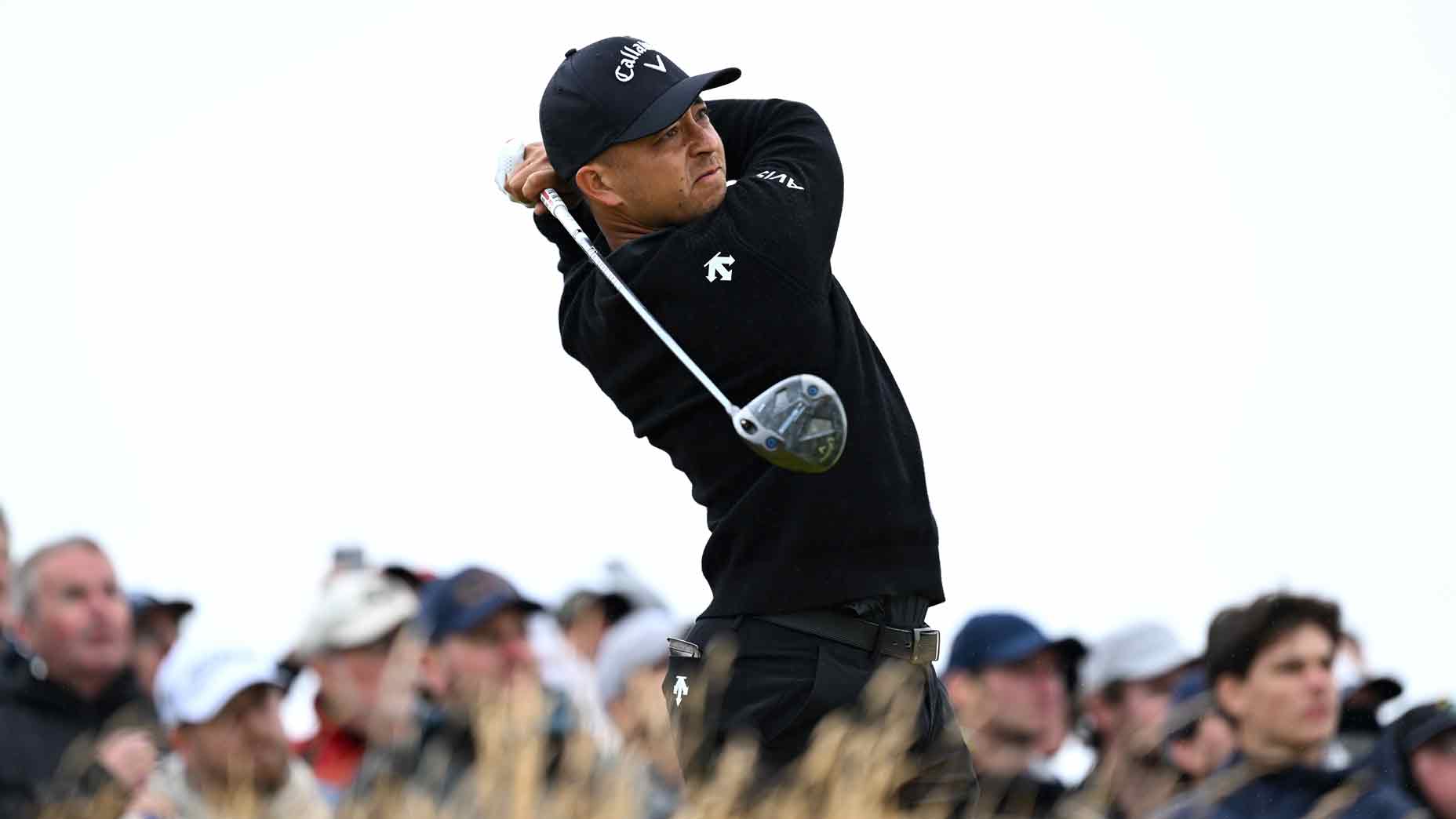Want instant ball-striking gains? Practice 3 shots, says top teacher
- Share on Facebook
- Share on Twitter
- Share by Email

By improving your ball-striking ability, you'll be in better spots to score lower.
Getty Images
If you’re an average golfer (*raises hand*), then you probably struggle with your ball-striking ability. That’s not to say you don’t hit a few good shots now and again, but consistently, you just lack that pure contact with each swing.
As any mid-to-high-handicapper knows, when you mishit the ball, poor results follow — which often lead to higher scores. So if you can improve your contact, in theory, you should be able to shave strokes off your scorecard, even if it’s just a few each round.
Try this around-the-world divot drill for instant ball-striking feedbackBy: Nick Dimengo
But instead of just mindlessly beating balls over and over at the driving range, you need to have a solid plan in order to develop the necessary fundamentals for more center-face contact.
That’s where GOLF Top 100 Teacher Mark Durland comes in, as he shares three types of shots and drills that every average golfer should be working on. By doing so, you’ll start experiencing better ball striking, improved shot results, and, if nothing else, more confidence out there on the golf course. Check out Durland’s tips below.
3 shots will help improve your ball-striking skills
Create a collision
Durland begins by explaining something every player should understand — golf is inconsistent by nature. It’s why even the best players in the world can’t shoot in the low-60s every single round.
“So even players at the highest level are inconsistent, they’re just inconsistent at a different level,” Durland says.
Rather than hitting the ball fat or thin — common mishits by most amateur players — better players might miss their target, but they still hit it pure. This is where Durland says improving your ball-striking will instantly impact your game.
So how can you improve your ball-striking? Durland suggests a simple drill to start.
“Simply put your feet together and make some half to three-quarter swings, learning what it feels like for the clubhead to hit the golf ball,” he says. “This helps isolate the lower body, and gives us better command of the bottom of our golf swing, which lands the clubhead in front of the golf ball to create a collision.”
Step into it
While improved ball striking is great, every golfer is obsessed with distance these days. So how can even the most average player generate more yards with each shot? Durland says it all starts with using the lower body properly — meaning you know how to sequence and control clubhead speed.
This step drill is 1 key to Xander Schauffele’s improved driving statsBy: Nick Dimengo
“The proper weight transfer not only adds distance, but helps contribute to the divot in front of the ball as well,” Durland says. “Thanks to data from pressure mats and force plates, we’ve noticed that Tour players spike into their lead side as they approach the top of their backswing. The average golfer just isn’t creating this weight transfer early enough.”
This type of movement might be for the elite golfer, but even you can add it to your sequencing with the following drill.
“Start in a normal address position with your feet together and behind the golf ball (to the right of the golf ball for a righty),” Durland says. “As your hands start back, step towards the target and hit the ball. This gets the pressure spiking into the lead foot before you get to the top of your backswing, just like you see the pros do.”
Punch it
If you’re anything like me, you probably hit a good majority of punch shots during a round — which definitely is no badge of honor. These typically happen when a drive goes sideways, leading to a second shot that just gets back into the fairway.
While punch shots aren’t great to have on the course, Durland says they can be a useful tool when you’re hoping to improve your ball-striking skills.
“Punch shots are a great way to learn how to control our wrist angles and create forward shaft lean — which is a must to hit consistently solid golf shots,” Durland says.
But instead of using the punch as a recovery shot, Durland says incorporate it into your practice routine to feel what better contact is like.
“The only difference between a ‘real’ punch shot and the drill punch shot is that you want the ball in the middle of your stance instead of in the back. This little adjustment requires proper forward shaft lean to help flight the ball low,” Durland says.
“So next time you’re at the range, rehearse some half-swing punch shots that finish with straight arms and the clubhead under your hands. Once you get a feel for the motion, work on punching a few 60-80-yard shots. This will help maintain a flat bottom to your golf swing, and eliminate any flipping or scooping to improve consistency.”

Rukket Sports Pathfinder Impact Mat™
View Product
Latest In Instruction

Golf.com Photographer

Nick Dimengo
Golf.com Editor











